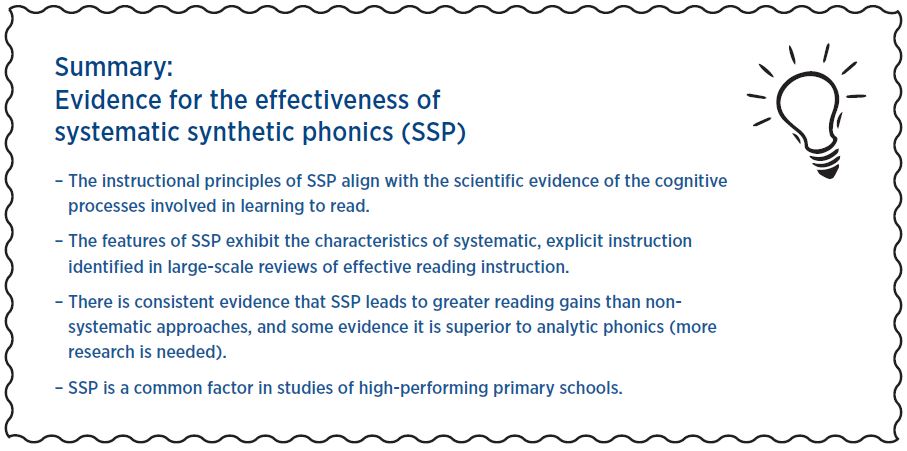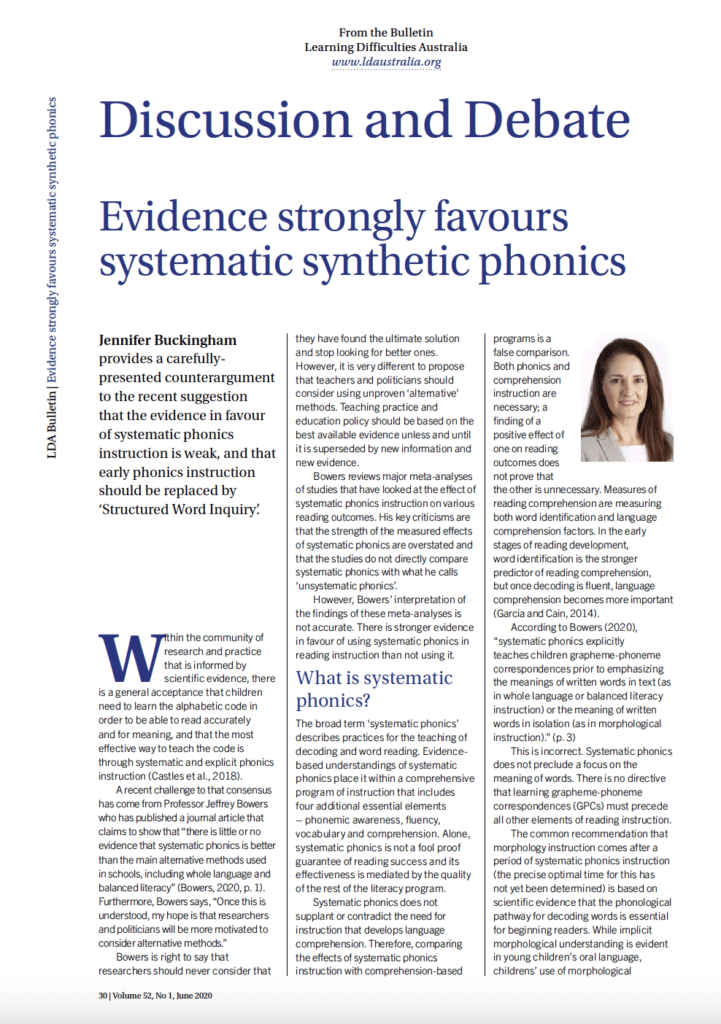There have been hundreds of studies of the cognitive processes involved in developing skilled reading. When children are first learning to read, they need to build neurological connections between the parts of the brain that store letters (visual information) and sounds (phonological information). This seems to happen almost effortlessly for some children; but others — such as children with dyslexia — need multiple exposures for this information to be retained in their long-term memory. The word that is read must then find a match in the semantic (meaning) area for comprehension.
Eye-tracking studies and research on the effect of letter position on reading rate shows that both novice and skilled readers attend to all of the letters in a word when reading, rather than memorising whole words by their shape. This is why using phonics to decode unknown words is a more efficient strategy than using the semantic (meaning) and syntactic (grammatical)
Novice readers — whose exposure to printed words is limited — decode most words consciously as they read. Over time, a process called ‘orthographic mapping’ takes place, where frequently read words are remembered as unique letter strings, and are recalled almost instantaneously. Skilled readers still decode new or unfamiliar words more consciously.
The most effective teaching approaches are those that are informed by the evidence of how children learn to read. Systematic and explicit approaches to phonics instruction facilitate the development of the scientifically-validated cognitive processes that lead to skilled reading. SSP is the specific method that most closely aligns with the characteristics of effective teaching.
Systematic literature reviews in the USA and England have found systematic, explicit phonics instruction to be more effective than non-systematic methods (such as whole language or whole word). Expert reviews in Australia and in England considered evidence from a wider range of research, and concluded that SSP in particular was highly effective.
An analysis of reading instruction and achievement in England — conducted after SSP was mandated in 2005 — found the adoption of SSP approaches had led to significant improvements in reading, particularly among children with the greatest risk of reading difficulty. While there is evidence that phonics instruction in England has improved, it still generally falls short of exemplary; therefore the potential overall gains might be muted.
Studies of high performing primary schools in England and Australia have found that high quality SSP is a common factor.


